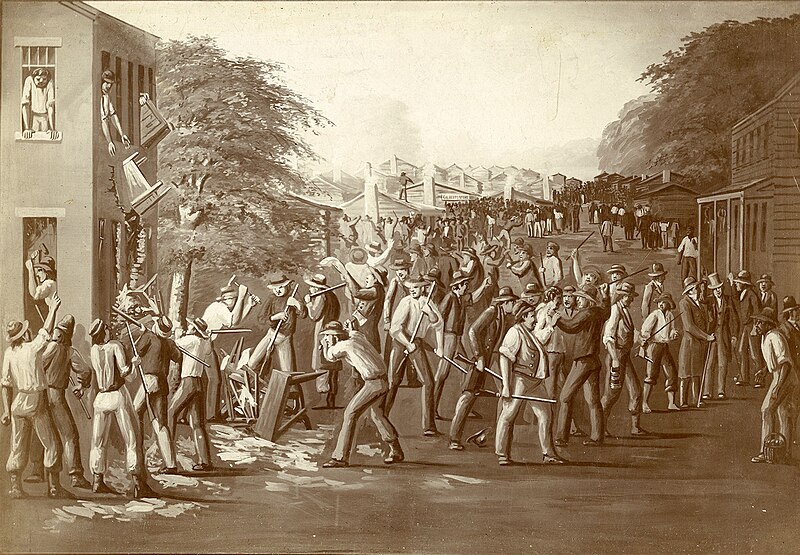Introduction
Jackson County was first settled by Mormon missionaries following a revelation received by Joseph Smith, the founder and prophet of the Church of Jesus Christ of Latter-Day Saints. According to this revelation, the prophesied Zion, or New Jerusalem, was to be established in Independence, a city in Jackson County, Missouri (Johnson; Harper).
Rapid Population Growth
Shortly thereafter, a rapid influx of Mormons began to purchase land and settle in the area. By July of 1833, the Mormon population in the county had grown to an estimated 1,200, with more arriving each month (Vaught).
Rising Tensions
As the Mormon population in the area increased, tensions also rose between the Mormons and the original inhabitants of the county. Many local residents feared they would be displaced by the expanding Mormon community. William Wines Phelps, the editor of the local Mormon printing The Evening and the Morning Star, exacerbated these tensions, frequently writing about the Mormon's plans to eliminate the "gentiles," or non-Mormon residents, from Jackson County (Van Orden).
Conflicting Economic, Political, and Racial Perspectives
Economically, the Mormon practice of communal living and self-sufficient trading, in which they traded almost entirely with the church store and affiliated shops, was viewed by the non-Mormon settlers as exclusionary. Additionally, the growing Mormon population was seen as an iminent political threat, as they could potentially outnumber and outvote the original residents within a couple of years. Furthermore, the settlers, many of whom were of Southern origin, strongly supported the institution of slavery and viewed abolitionist sentiments with suspicion and animosity. However, the Mormons, many of whom were from northern states like New England, Ohio, and New York (where Mormonism originated), carried abolitionist leanings. Rumors that Mormons were inciting enslaved individuals to rebellion or encouraging free Black people to settle in the area led to more paranoia and hostility. Moreover, the settlers, who had petitioned the federal government for protection from Native tribes following events like the 1832 Black Hawk War, viewed Indigenous people with fear and distrust. In contrast, Native Americans were seen by Mormons as "a remnant of the house of Israel" (Book of Mormon, Title Page) prophesied in the Book of Mormon, destined to play a role in the establishment of Zion (Harper; Van Orden).
Expulsion from Jackson County
By the summer of 1833, the tensions in Jackson County reached a breaking point, leading to the violent expulsion of the Mormons. On July 1, 1833, Reverend Benton Pixley, a prominent critic of the Mormons, began distributing a pamphlet titled Beware of False Prophets to incite local citizens against the Saints. On July 20, a large mob of nearly 500 settlers gathered at the courthouse in Independence, demanding that the Mormons leave the county immediately. When church leaders requested time to consider their response, the mob rejected the request and proceeded to destroy Phelps's printing press (see fig.1), scattering the type and destroying manuscripts (Van Orden).

Figure 1. Depiction of the destruction of the Mormon press in Independence, Missouri by Carl Christian Anton Christensen, 1 January 1882.
The violence escalated as Bishop Edward Partridge was dragged from his home, tarred, and feathered, while other church members were assaulted and threatened. The mob demanded that the Mormons leave Jackson County or face extermination. Under duress, Mormon leaders, including Phelps and Partridge, signed a treaty agreeing to evacuate their people by January 1834, with all remaining Saints to be gone by April. Many sought refuge in neighboring counties, especially in Clay County across the Missouri River (Newill; Van Orden).